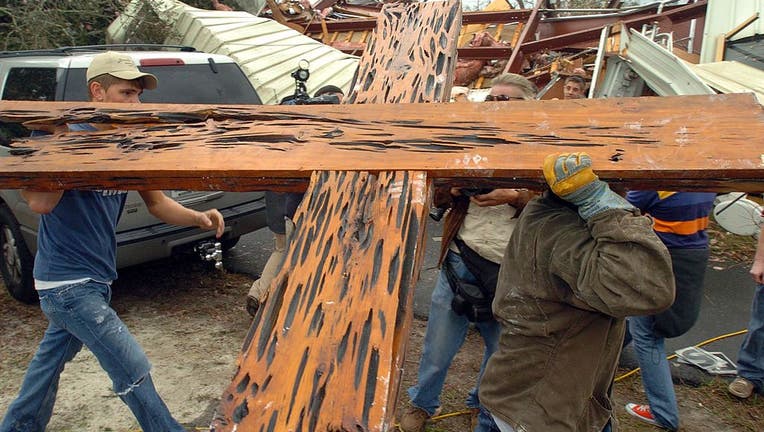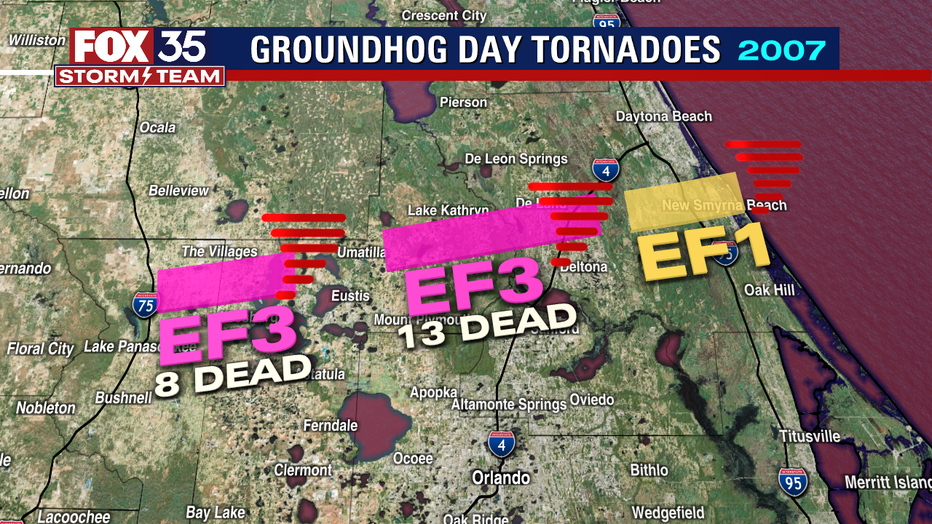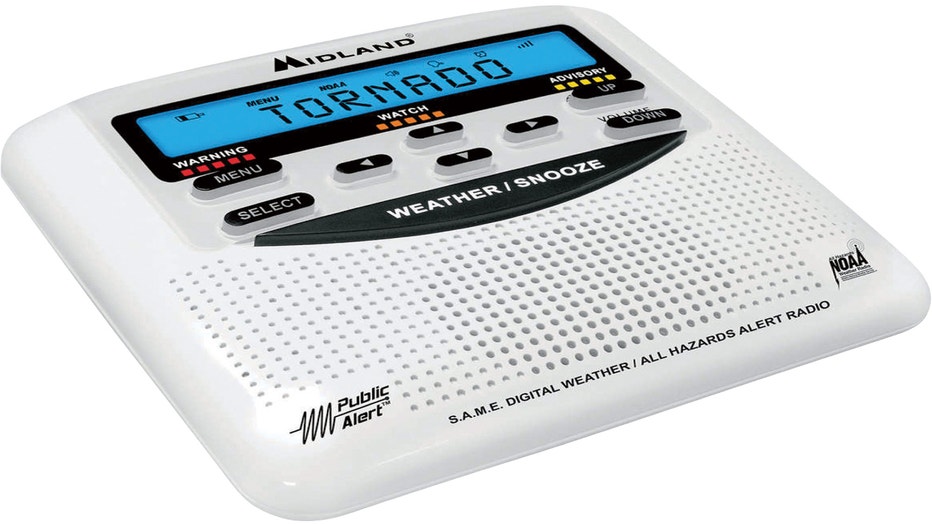Somber anniversary: 15 years since Central Florida's deadly Groundhog Day tornadoes

Church members carrry a cross from the pulpit at the Lady Lake Church of God, which was destroyed by a tornado a day earlier, in Lady Lake, Florida, Saturday, February 3, 2007. (Photo by Stephen M. Dowell/Orlando Sentinel/Tribune News Service via Get
LAKE MARY, Fla. - This week marks a somber anniversary. It was 15 years ago on Feb. 2 that a massive tornado killed 21 people in Central Florida in the wee hours of the morning.
It was essentially, "the middle of the night" when the unthinkable happened: a series of tornadoes ripped through densely populated communities shortly after 3 a.m. and many never received a warning as they were sound asleep. It would be the second-deadliest tornado outbreak in state history (1998 Kissimmee, "Night of the Tornadoes" was the deadliest, totaling 42 fatalities and 259 injured -- also hitting in February and most twisters after midnight).
The 76 who survived their physical injuries from this Groundhog Day 2007 tornado outbreak endured emotional and psychological pain from a night forever burned into their memories.

Florida Gov. Charlie Crist and U.S. Sen. Mel Martinez (R-FL), right, are interviewed in front of the rubble at the Lady Lake Church of God, which was destroyed by a tornado a day earlier, in Lady Lake, Florida, Saturday, February 3, 2007. (Photo by S
In total, three tornadoes were spawned from the single severe thunderstorm, damaging or destroying over 1,400 homes across northern Sumter, Lake, and Volusia counties where it tracked from west to east.

Roughly seven out of every 100 homes damaged by the tornadoes included the injury or death of one or more of their occupants.
It was approximately 3:06 a.m. when the National Weather Service issued their first tornado warnings and local meteorologists hit the airwaves. As many slept with their TVs off and cell phone warnings not yet a thing, only the trees whispered warnings as the winds picked up and lightning flashed in the distance. Muted thunder accompanied the fast-approaching storms, racing at over 55 mph. This left little time for anyone who actually heard the warnings to make meaningful preps.
The first touchdown happened in the Villages at 3:10 a.m. The National Weather Service quickly observed debris on radar and warned further that a damaging tornado was likely in progress. That first tornado killed eight people in and around The Villages. After that twister lifted, the thunderstorm spawned a second and deadlier twister, killing 13 southwest of Paisley to the east of DeLand.
The meteorological setup was unusual but not unheard of in Central Florida this time of year. A warm and humid night saw temperatures in the mid-70s as a warm front lingering just north while a cold front fast-approached from the Gulf of Mexico. Meanwhile, high above, the jet stream roared, neatly separating the subtropical air of the Bahamas from the polar air that is a northern winter and providing gasoline for a building fire.

Our region was quite literately a powder keg of weather energy for thunderstorms to form and rotate when they do. Of the twisters that night, some had winds of over 160 mph. Insurance claims would eclipse $218 million.
I worked for a TV station doing weather in Tampa three years after this unfortunate event and remember it served as a benchmark. We partnered with the National Weather Service and a company that produces the NOAA Weather Radio encouraging every household to have one. Just like a smoke detector, these radios feature a loud alarm that will wake you up should a twister threaten your area. Some come equipped with flashing strobes for those with hearing loss.
If you seek to buy one, look for, "S.A.M.E. equipped," as that is an acronym which describes the tech inside these radios, allowing the programming of customized alerts for your location. You can pick them up online and at some sports and outdoor retailers.

This is the time of year when we need to stay vigilant whenever fronts approach, as Florida experienced its two deadliest tornado outbreaks in the month of February.
The FOX 35 Storm team is dedicated to providing you with the information you need to make decisions about your safety when deadly weather threatens. Our brand new Next Generation FOX 35 Storm Tracker Radar, is just one tool we have to make this promise to you.
Click here for Orlando weather, Central Florida weather conditions, and live radar.

